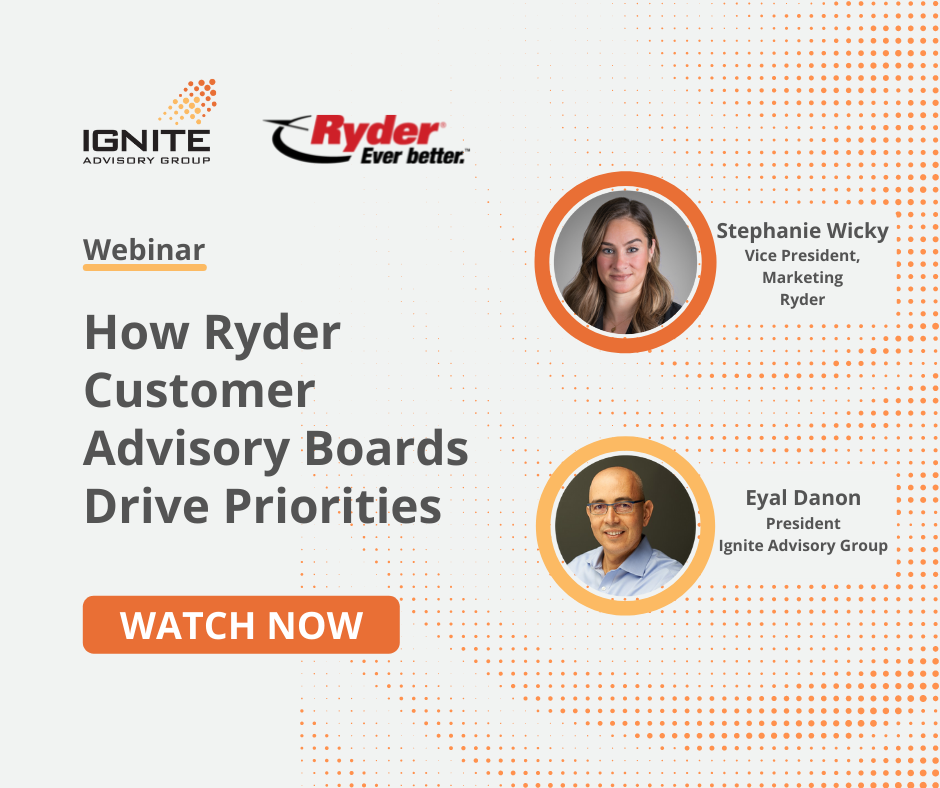Well-run customer advisory boards (CABs) usually get a high percentage of member attendees at meetings (either in-person or virtual). And why not – these engagements should offer your members the opportunity to learn about potential solutions to shared challenges, industry trends coming their way and developments and perspectives from your host company.
On the other hand, if you’re starting to see some attrition in meeting attendance, there may be some reasons why – and some things you can do about it.
Here are the top 5 reasons your CAB members may not be showing up for meetings:
1) Your customer advisory board meeting content
In our experience managing CABs, the top reason your members may be bailing on your meetings is that the value to them is low. This might be the case if your session leaders are simply presenting generic PowerPoint presentations, your product folks are showing detailed product demos, or you’re not building in enough time for members to address shared challenges and engage with each other. Remember, your CAB meeting agenda should be driven by the members (not your company) after talking to or surveying them before the meeting, and you should utilize a solid process to creating meeting your content.
2) Changes in their company
We know companies are always evolving and changing—this may include the role of your CAB member. They may have been pulled to help integrate an acquired business, address an urgent business challenge or focus on generating revenue. If you have a CAB member who is no longer attending meetings, contact them (via phone is best) to see if their job situation has changed and whether it’s a temporary issue. Hopefully, they will want—and be able—to continue serving on your board.
3) Changes to the CAB member’s account status
Sometimes, CAB members may not be attending your meeting due to them changing vendors or perhaps considering no longer using your product. Contacting them as suggested above may uncover an account issue in which you will want to rally their representative or implementation team to address and remedy ASAP. Check with your account rep to see if there are any issues with the customer you should know about; hopefully you can fix it and get them back to attending your CAB meetings.
4) Expired CAB member tenure
Perhaps your CAB member has simply fulfilled her tenure on your board (typically two years) and is ready to move on from it. In well-run CABs, members tend to stay well after their initial tenure, so if you have people dropping out, it may indicate they are not seeing the value. On the other hand, if they fulfilled their tenure and liked your program, you may consider sending them a thank you gift for their service, and/or creating an alumni board for CAB members to continue communicating with each other.
5) Your timing
You may simply be holding your meetings at a time that is particularly tough for your CAB members. This may be at the end of the month for finance folks, the end of the quarter for revenue-generating executives, or perhaps conflicting with major industry events. Of course, holidays and vacations may also play a role here, especially for members with kids. To find the best time to meet, ask your members if there are dates that are particularly good (or bad) for them, and schedule around these.
Occasional meeting no-shows can happen; your customer advisory board members are busy, high-level executives after all, and things do come up. But if you’re starting to see increased meeting absences from certain members – or several of them – it may be time to conduct some honest self-examination to ensure your meeting is delivering the value you promised your members when you recruited them in the first place. Watch a webinar on-demand with Ryder to learn the secrets to how they keep their CAB members engaged and drive tangible solutions from CAB feedback.

